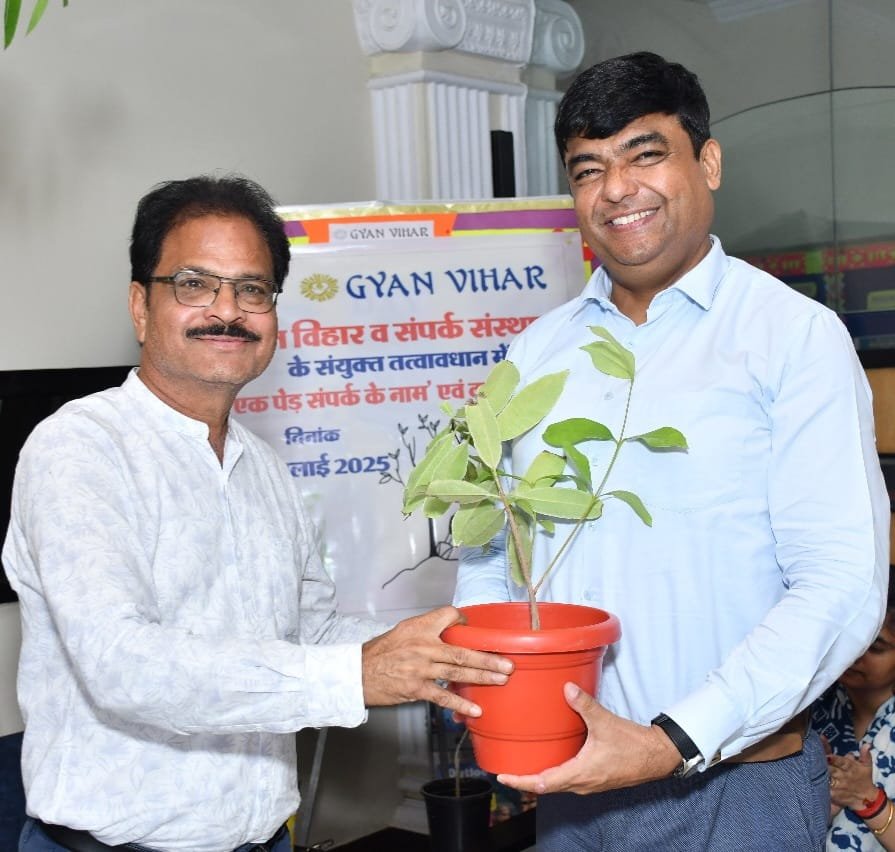India
PM Modi Explores Gir on World Wildlife Day: Celebrating Asiatic Lion Conservation

Contents
Introduction to World Wildlife Day
Gir National Park, located in the western Indian state of Gujarat, serves as a crucial sanctuary for the Asiatic lion, Panthera leo persica. World Wildlife Day is a global event celebrated on March 3rd each year, established to raise awareness about the importance of conserving wildlife and its habitat. This day serves as a reminder of the multitude of species that are threatened by extinction due to habitat loss, poaching, and climate change. Recognizing the intrinsic value of wildlife and the necessity of preserving biodiversity is crucial for maintaining ecosystem balance and promoting sustainable development.
The significance of World Wildlife Day lies in its ability to unite communities around the world in their efforts to protect endangered species. It provides an opportunity for governmental and non-governmental organizations, communities, and individuals to engage in various conservation activities, educational programs, and advocacy campaigns. Many countries take this day to organize events such as wildlife seminars, nature walks, and social media campaigns, all aimed at fostering a deeper understanding of wildlife conservation.
The theme of World Wildlife Day varies each year, focusing on different aspects of wildlife conservation. These themes highlight specific species or conservation challenges, encouraging nations to collaborate and strategize effective measures for safeguarding their natural heritage. Educational institutions often incorporate World Wildlife Day into their curricula, fostering awareness and appreciation for wildlife among the younger generation.
Through these global celebrations, World Wildlife Day acts as a catalyst for action, promoting efforts to protect endangered species and their habitats. It encourages individuals to reflect on their relationship with nature, advocating for responsible behavior towards the environment. As countries worldwide acknowledge this day, it emphasizes the need for sustained wildlife conservation efforts, making it pertinent to address these challenges on a global scale.
Overview of Gir National Park
Gir National Park, located in the western Indian state of Gujarat, serves as a crucial sanctuary for the Asiatic lion, Panthera leo persica. Covering an area of approximately 1,412 square kilometers, the park is characterized by a diverse landscape that includes dry deciduous forests, scrubland, and grasslands. The geographical features of Gir contribute to its unique ecosystem, which accommodates a variety of flora and fauna, making it one of India’s most significant wildlife reserves.

Established as a protected area in 1965, Gir has since become the last bastion of the Asiatic lion, whose population was once on the brink of extinction. The park boasts a small yet vital population of these majestic felines, with numbers gradually increasing due to dedicated conservation efforts. Beyond the lions, Gir is home to around 300 species of birds, 38 species of mammals, and a rich diversity of reptiles. This biodiversity highlights the ecological importance of Gir, attracting wildlife enthusiasts and researchers alike.
The climate in Gir is predominantly dry, with a distinct monsoon season from June to September. This seasonal variation affects the vegetation, supporting species such as teak, banyan, and various grasses. The park’s habitat not only sustains the Asiatic lion but also encompasses other critical species, including leopards, chital, sambar, and nilgai, which contribute to its ecological balance. Gir’s unique environment serves as a testament to the importance of wildlife conservation, emphasizing the need for ongoing protection efforts to ensure the survival of the Asiatic lion and the myriad species that inhabit this exceptional national park. Through prudent management and community involvement, Gir National Park continues to thrive as an essential sanctuary for wildlife preservation.
Asiatic Lions: A Brief History
The Asiatic lion (Panthera leo persica) once roamed vast areas across the Middle East and into India, but today, their population is largely confined to the Gir Forest National Park in Gujarat, India. Historically, the range of these magnificent creatures extended from the Indian subcontinent to regions including Turkey and Iran. However, by the early 20th century, hunting and habitat loss had contributed to a significant decline in their numbers. The Asiatic lion population dwindled to about 20 individuals by the end of the 1800s, primarily due to excessive hunting by British colonial officers and local rulers, along with human expansion into their natural habitats.
Conservation efforts for the Asiatic lion gained momentum during the early 20th century when the Nawab of Junagadh declared the Gir Forest a protected area. This was a crucial turning point, initiating a series of conservation strategies aimed at protecting the remaining population. In the subsequent decades, various organizations and wildlife agencies focused on habitat preservation and implementing protection laws to mitigate human-wildlife conflicts. These concerted efforts have led to a remarkable recovery, with the population of Asiatic lions increasing to over 600 individuals as of recent estimates. This recovery highlights the importance of targeted conservation measures and community involvement in wildlife preservation.
In addition to their ecological significance, Asiatic lions hold cultural importance in Indian heritage. They are emblematic of strength and courage, featured in ancient folklore and Indian mythology, and are often associated with various dynasties throughout history. Today, Asiatic lions symbolize a successful conservation story and continue to garner public interest and support, particularly through initiatives like World Wildlife Day. This day emphasizes the critical importance of protecting endangered species and their habitats, showcasing the interconnectedness of wildlife and human cultures.
PM Modi’s Visit to Gir
On World Wildlife Day, Prime Minister Narendra Modi undertook a significant visit to Gir National Park, primarily recognized for its crucial role in the conservation of the Asiatic lion. This visit aimed to highlight India’s commitment to wildlife conservation and to draw global attention towards the preservation of endangered species. With the Asiatic lion population witnessing a remarkable recovery, Modi’s engagement sought to promote further efforts in wildlife protection and habitat preservation.
During his time at Gir, Prime Minister Modi participated in various activities showcasing the rich biodiversity of the region. He engaged with local conservationists, authorities, and community members to understand the challenges and successes experienced in the conservation of the Asiatic lion. His presence served as a powerful reminder of the importance of collaborative efforts between governmental bodies, local communities, and wildlife organizations in achieving conservation goals. By acknowledging the successful breeding programs and habitat restoration initiatives at Gir, the Prime Minister emphasized the need for sustained efforts and funding to maintain the momentum of lion conservation.
Moreover, Modi delivered compelling messages on the value of wildlife to not only ecological balance but also to cultural heritage. He urged citizens to foster a deep respect for nature, advocating for community involvement in conservation efforts. Such high-profile visits from leaders like PM Modi significantly amplify the message of wildlife conservation, inspiring individuals and organizations to contribute to similar initiatives. The international spotlight shone on Gir during this visit not only raised awareness about the Asiatic lion but also underscored the importance of preserving biodiversity as a whole. The visit marks a vital step in reinforcing India’s leadership in wildlife conservation efforts globally.
Conservation Efforts in Lion Protection
The conservation of Asiatic lions has become a pivotal focal point in India, facilitating a remarkable recovery of this majestic species primarily confined to the Gir Forest National Park in Gujarat. Various initiatives have been undertaken to safeguard their population, emphasizing the importance of habitat preservation and community involvement. The strategies employed include habitat management, anti-poaching measures, and the establishment of a cohesive framework integrating local communities with conservation efforts.
Habitat management plays a crucial role in ensuring that the Gir ecosystem remains conducive for the Asiatic lions. This involves the restoration and protection of forest areas and water sources, while also mitigating human-wildlife conflict through the establishment of buffer zones. These zones act as a protective barrier, decreasing adverse interactions between lions and local farmers. Furthermore, the government has implemented habitat connectivity projects to facilitate the movement of lions between fragmented habitats, essential for genetic diversity and population stability.
Anti-poaching vigilance has been significantly enhanced, with dedicated forest rangers and surveillance technology deployed across key areas of the park. Frequent patrols not only deter illegal activities but also monitor the lion population, enabling timely interventions when needed. Local government agencies and wildlife organizations work collaboratively, providing resources and training to ensure that the protection measures are effective and sustainable.
Community involvement is another cornerstone of lion conservation. Educational programs and awareness campaigns have been introduced, highlighting the value of Asiatic lions to the ecosystem and local culture. By fostering a sense of ownership and responsibility among local residents, these initiatives aim to cultivate favorable attitudes towards wildlife conservation. The empowerment of local communities through a sharing of benefits derived from eco-tourism further strengthens their engagement, promoting a harmonious coexistence with the Asiatic lions.
Challenges Faced in Asiatic Lion Conservation
The conservation of Asiatic lions, primarily found in the Gir Forest National Park, is fraught with challenges that jeopardize their survival and the health of the ecosystems they inhabit. One of the foremost issues is habitat loss, driven by rapid urbanization and agricultural expansion. As human populations move closer to their natural habitat, lions are increasingly losing their territory, which not only reduces their available living space but also fragments populations, making it difficult for them to breed and thrive.
In addition to habitat loss, human-wildlife conflict poses a significant threat to Asiatic lions. As these majestic creatures venture into agricultural lands in search of prey, they often come into conflict with local farmers. This can lead to retaliatory killings, where farmers may hunt lions to protect their livelihoods. Effective management strategies are essential to mitigate these conflicts and foster coexistence between the local communities and the lion population.
Poaching remains another critical threat in the conservation of Asiatic lions. Even though legal protections exist, illegal hunting continues to pose risks, with poachers targeting not only lions but also their primary prey species. This depletion of prey affects the lions’ natural hunting patterns and can lead to starvation and declining health within the population.
Climate change further complicates the scenario by altering habitats and influencing the availability of water and food sources. Increased temperatures and changing rainfall patterns can lead to droughts, diminishing resources that are vital for both lions and their prey. These challenges collectively threaten not only the population of Asiatic lions but also the ecological balance of their habitat.
Success Stories in Lion Conservation
The conservation efforts in Gir National Park have led to significant success stories, particularly regarding the survival and growth of the Asiatic lion population. Since the establishment of conservation initiatives, the lion population has witnessed a remarkable increase. In 1975, there were only about 12 lions recorded in the park, but recent estimates suggest that the number has surged to over 600. This growth can be attributed to various measures implemented by the forest department and other conservation organizations aimed at protecting the lions’ natural habitat and ensuring their safety from poaching.
Community engagement has played a pivotal role in these success stories. Local communities around Gir have become increasingly involved in conservation efforts, understanding the value of protecting these majestic creatures. Programs have been initiated to educate residents about the ecological significance of Asiatic lions and the benefits of biodiversity. As a result, many villagers have adopted practices that promote coexistence, such as livestock management techniques that minimize conflict between lions and farmers. Local stakeholders have also benefited from eco-tourism, which has emerged as a sustainable income source, further incentivizing the protection of wildlife.
Furthermore, traditional practices in the region have evolved to support lion conservation as communities recognize the importance of preserving their natural heritage. By shifting towards more sustainable agricultural practices and participating in wildlife protection initiatives, local residents contribute to the long-term survival of both the lions and their livelihoods. This cooperative approach has not only enhanced lion populations but also fostered a deeper connection between the local people and their environment. The Gir ecosystem’s vitality relies on this partnership, demonstrating that effective conservation is possible through the unification of ecological and community interests.
Global Recognition of Conservation Efforts
Prime Minister Narendra Modi’s visit to Gir National Park on World Wildlife Day represents a significant acknowledgment of the conservation initiatives undertaken for the Asiatic lion, a species that has seen a remarkable revival in recent years. The dedicated efforts in Gir, which is often regarded as the last refuge of the Asiatic lion, have not only garnered national attention but have also received global recognition. This recognition underscores the importance of international collaboration in wildlife conservation and the need for concerted efforts to protect endangered species.
Also read : The Transformation of Prayagraj Mela Grounds Post-Maha Kumbh 2025
The achievements of Gir’s conservation efforts have been highlighted in various international forums, drawing attention to India’s commitment to biodiversity preservation. The successful increase in the lion population from just a few dozen to over 600 individuals is a noteworthy milestone that resonates with conservationists worldwide. Such accomplishments illustrate the effectiveness of well-structured wildlife management policies and community involvement in conservation projects. Global recognition not only bolsters the moral imperative to protect biodiversity but also encourages funding and research opportunities from international organizations and governments.
The implications of this international support for wildlife conservation are far-reaching. Engaging with a global audience can aid in uniting diverse conservation strategies and inspire countries facing similar challenges. Additionally, it attracts tourists and eco-enthusiasts, which can serve as a financial boon for local economies while promoting awareness about the importance of preserving wildlife. The increased attention on Gir, thanks to PM Modi’s visit, can catalyze further efforts to protect the Asiatic lion and its habitat, showcasing a successful model of conservation that other regions may adopt. As the global community recognizes the significance of these initiatives, it sets a precedent for future conservation endeavors, fostering an environment where wildlife thrives alongside human development.
Summary and Future Directions
PM Modi’s visit to Gir National Park on World Wildlife Day serves as a crucial reminder of the importance of wildlife conservation, particularly the preservation of the Asiatic lion, an emblematic species of India. His presence emphasizes the government’s commitment to safeguarding the natural heritage and habitats that these majestic creatures rely on for survival. The ongoing conservation efforts in Gir have seen a resurgence in the Asiatic lion population, a remarkable success that highlights the effectiveness of dedicated initiatives aimed at protecting biodiversity.
The significance of PM Modi’s visit extends beyond mere symbolism; it underscores a unified approach towards conservation that combines government action, scientific research, and community involvement. The efforts witnessed in Gir are not just isolated success stories but are part of a larger framework aimed at addressing ecological challenges across the nation. Habitat restoration, anti-poaching measures, and community education programs are integral components of this multifaceted conservation strategy.
Looking towards the future, the challenge remains to create sustainable corridors that facilitate the safe movement of lion populations and ensure genetic diversity. Additionally, harnessing the support of local communities is essential to foster a sense of ownership over these conservation efforts. By promoting eco-tourism and sustainable livelihood opportunities, communities can become active participants in safeguarding wildlife while benefiting economically. Continuous research, adaptive management practices, and cooperation between stakeholders, including local populations, wildlife NGOs, and government entities, will be pivotal in shaping a future where Asiatic lions and their habitats thrive.
As we celebrate the strides made in Asiatic lion conservation at Gir, there remains much work to be done. The concerted efforts of individuals and communities are vital in driving forward the mission to protect this iconic species and ensuring that future generations can experience the splendor of the Asiatic lion in its natural habitat.
Crime
Vandalism by Kanwariyas in Meerut: School Bus Attacked, FIR Registered

Contents
Meerut, July15,2025
Tension flared in Meerut’s Sadar Bazar area after a group of Kanwariyas allegedly vandalized a school bus during the annual Kanwar Yatra. The incident occurred on Monday, July 14, prompting swift police action.
According to the complaint filed by Sub-Inspector Gaurav Kumar, 4-5 unidentified youths got into an argument with the bus driver. The confrontation escalated quickly, with the accused allegedly hurling abuses, issuing death threats, and smashing the bus windows.
Upon receiving the alert, police rushed to the spot and found the bus in a damaged condition, surrounded by a large crowd.
Bus Windows Shattered by Kanwariyas
Confirming the incident, Circle Officer (CO) Santosh Kumar of Meerut Cantonment said the police had been informed about a scuffle involving a group of youths and the bus driver. “They had broken the windows of the bus. We immediately reached the spot and ensured the safety of both the driver and the vehicle,” he stated.
FIR Lodged, Investigation Underway
A case has been registered under various sections of the Bharatiya Nyaya Sanhita (BNS), and efforts are on to identify the culprits through video footage. Officials have assured that strict legal action will be taken against those found guilty.
India
A Milestone Towards Gaganyaan: PM Modi Welcomes Group Captain Subhanshu Shukla After Historic Space Mission

New Delhi, July15,2025
Prime Minister Narendra Modi has lauded Group Captain Subhanshu Shukla for his successful return from space, calling it a proud moment for the nation and a significant step toward India’s ambitious Gaganyaan mission.
Taking to social media, PM Modi wrote,
“I join the entire nation in welcoming Group Captain Subhanshu Shukla as he returns to Earth from his historic space mission. As the first Indian to visit the International Space Station, Subhanshu has inspired millions with his dedication, courage, and pioneering spirit. This marks another milestone on the path toward our own human spaceflight mission – Gaganyaan.”
“Touching the skies, lifting India’s dreams”
Defence Minister Rajnath Singh also expressed pride over the successful completion of the Axiom-4 mission. In a heartfelt social media post, he wrote:
“Group Captain Subhanshu Shukla’s successful return from the historic Axiom-4 mission is a moment of immense pride for every Indian. He has not only touched space but has elevated the dreams of India to new heights.”
Singh further emphasized that Subhanshu’s journey to and from the International Space Station is not merely a personal achievement but a major stride in India’s expanding space ambitions.
“I pray for his continued success in all future endeavors,” he added.
Subhanshu Shukla’s mission marks a new chapter in India’s space exploration story, strengthening the country’s position on the global stage and inspiring the next generation of Indian astronauts.
Crime
Tension in Jaipur’s Ramganj Area After Alleged Harassment Incident Sparks Stone-Pelting Between Communities

Contents
Jaipur, July 15,2025
Tension gripped the Ramganj area of Jaipur on Saturday after an alleged incident of harassment involving a woman escalated into a violent clash between two communities. The confrontation, which began as a verbal dispute, quickly turned into stone-pelting, causing panic in the neighborhood.
The incident occurred in the Babu Ka Tika locality, a part of Ramganj known for its sensitive history. According to eyewitnesses, a few young men from one community allegedly misbehaved with a local woman. When members of the other community confronted them, the situation escalated rapidly. What started as an argument soon turned into chaos, with both sides hurling stones at each other.
Several people were reportedly injured in the clash, although the police have not yet released an official statement regarding the number or severity of the injuries. Locals also reported damage to nearby shops and vehicles, adding to the fear and anxiety in the area.
Police forces rushed to the scene as soon as the incident was reported. To prevent further escalation, additional security personnel were deployed, and patrolling has been intensified throughout the neighborhood. The situation is currently under control, but authorities are maintaining a heightened security presence in the area as a precaution.
Ramganj is considered one of Jaipur’s most densely populated and communally sensitive areas, with a history of similar tensions. Given the seriousness of the incident, the police have launched a full investigation. CCTV footage from the area is being reviewed to identify those involved in the violence.
Officials have assured that strict action will be taken against anyone found responsible. The local administration has urged residents not to pay heed to rumors and to maintain peace. Authorities emphasized that no one will be allowed to disturb law and order under any circumstances.
Andhra Pradesh
Andhra Pradesh: Class 9 Student Dies After School Fight with Classmate in Bobbili

Andhra Pradesh, July15,2025
In a tragic incident from Bobbili town in Andhra Pradesh, a 14-year-old Class 9 student died after a scuffle with a classmate moments after school got over. The boy, identified as Sundarada Karthik, reportedly got into a fight near the Bobbili Fort, where he was punched by his classmate, collapsed, and later succumbed to his injuries at the hospital.
According to police sources, Karthik, a resident of Ravu Gari Street and a student of Class 9, frequently argued with a fellow classmate over petty issues. Their rivalry had been escalating for some time.
On Monday, just after the school had closed for the day, the two boys reportedly encountered each other again near the Bobbili Fort. According to eyewitness accounts and police reports, Karthik allegedly provoked his classmate and challenged him to a fight. The argument quickly turned physical. During the altercation, the other boy is said to have punched Karthik, who fell unconscious on the spot.
He was immediately rushed to a nearby hospital, but doctors declared him dead on arrival.
The incident has shocked the local community and raised concerns about rising aggression among schoolchildren. Police are investigating the matter and questioning witnesses to determine the exact sequence of events.
Crime
Death Sentence of Indian Nurse Nimisha Priya Postponed, Major Update from Yemen

Yemen, July 15,2025
In a major relief, the execution of Indian nurse Nimisha Priya has been postponed, according to sources. Nimisha, who hails from Kerala, was scheduled to be hanged in Yemen on July 16. The latest reports suggest that a significant development has taken place, temporarily halting the sentence that had sparked international concern.
Nimisha’s case has drawn widespread attention and emotional appeals from across India and the global Indian community. The postponement has brought a moment of hope for her family, well-wishers, and the many people who have been campaigning tirelessly for her life to be spared.
Crime
Odisha: Student Who Accused College Professor of Sexual Harassment Dies by Suicide, Father Alleges She Was Pushed to Take Extreme Step

Odisha, July15,2025
Bhubaneswar, Odisha – A college student who had attempted suicide after alleging inaction on her sexual harassment complaint has died while undergoing treatment at AIIMS Bhubaneswar.
The student had accused the Head of Department at Fakir Mohan College in Balasore of sexually harassing her. She took the drastic step on Saturday, allegedly due to frustration over the lack of appropriate action on her complaint. Following the attempt, she was admitted in critical condition to AIIMS Bhubaneswar, where she later passed away.
The student’s father has now come forward with serious allegations against the internal inquiry committee, claiming that their mishandling and a deliberately misleading report forced his daughter into taking her own life.
Speaking to the media, he said, “We are seeking justice. Merely arresting two individuals won’t suffice. My daughter was mentally tortured and pushed to the edge. The internal committee members are equally responsible. I request the government to take the strictest possible action against them.”
The case has sparked widespread outrage and calls for a thorough and transparent investigation into how the college handled the complaint and whether the internal committee was complicit in suppressing the matter.
As the family mourns their irreparable loss, voices demanding accountability grow louder, raising critical questions about institutional response to sexual harassment complaints in educational institutions.
Crime
Principal Arrested After Student’s Suicide Attempt in Odisha College Over Sexual Harassment Complaint

Odisha, July 14,2025
In a shocking development from Balasore, Odisha, the principal of Fakir Mohan College, Dilip Kumar Ghosh, has been arrested by Sahadevkhunta Police following a student’s suicide attempt on campus.
The arrest comes after a female student of the college allegedly attempted suicide on Saturday, accusing a faculty member of sexual harassment. The student is currently in critical condition and receiving treatment at AIIMS Bhubaneswar.
Confirming the arrest, Balasore Superintendent of Police, Raj Prasad, told BBC that the principal was taken into custody for his alleged negligence in handling the student’s repeated complaints.
According to the victim’s family, the girl had been subjected to ongoing sexual harassment for several months. Despite lodging a formal complaint with the college authorities, no meaningful action was taken. Frustrated and distressed by the college’s inaction, the student reportedly attempted to take her own life.
The family had been demanding the arrest of the principal, alleging that he failed to take timely and appropriate action. They also accused the college’s internal inquiry committee of trying to protect the accused teacher, instead of supporting the victim.
Earlier, the police had arrested the Head of the Department (HoD) of the Education Department, Sameer Kumar Sahu, who is the prime accused in the sexual harassment case.
On Sunday, Odisha Chief Minister Mohan Charan Majhi addressed the issue, stating,
“An investigation is underway to understand the full circumstances of the incident. The government will ensure strict action is taken against those responsible.”
The incident has sparked widespread outrage, highlighting the urgent need for stricter enforcement of sexual harassment protocols within educational institutions.
Environment
Literature and Environment Are Both Sources of Sensitivity”Tree is Life: Grand Celebration of ‘Ek Ped – Sampark Ke Naam’ and Poetry Recitation on Environment

Jaipur, July 14,2025
A Heartfelt Environmental and Literary Initiative by Sampark Sansthan Receives Overwhelming Response at Gyan Vihar School Campus Jaipur.
The joint initiative of Sampark Sansthan and Gyan Vihar School, titled ‘Ek Ped – Sampark Ke Naam’, along with an environmental poetry recital, turned out to be a meaningful confluence of ecological awareness and literary sensibility. Students, teachers, poets, and social workers participated in the event with deep enthusiasm and emotional engagement.
Welcoming everyone, Sampark Sansthan President Anil Ladha remarked,
“This is not just an event, it’s an attempt to connect life and society through tree plantation. We want every individual to nurture a tree as lovingly as they would nurture a relationship.”
Dr. Ritvij Gaur (Principal), present as a special guest, emphasized in his speech,
“Trees are the foundation of our culture and survival. Teaching children to emotionally connect with nature through tree planting is the need of the hour.”

Sampark Sansthan General Secretary and Coordinator Renu ‘Shabdmukhar’ touched hearts with her words,
“This initiative aims to instill in students a sense of responsibility and the spirit of coexisting with trees. When nature and poetry walk together, society becomes truly awakened.”
Veteran poet Prof. Prabodh Govil inspired the audience, stating,
“Literature and environment are both profound sources of human sensitivity.”
Renowned writer Dr. Jayshree Sharma added,
“Trees don’t just give us oxygen, they teach us life values. A poem, a plant, and a thought — these can together change the world.”
Inspiring the young generation, senior poet Anshu Harsh quoted,
“When you walk ahead, many will follow.”
Usha Rastogi’s positive presence brought an energetic vibe to the event.
Program Coordinator Himadri Samarth expressed that,
“No matter what name we give to the campaign, the aim remains the same – to protect the environment.”
He concluded by thanking all the distinguished guests for their participation and support.
The event was beautifully hosted by Seema Walia, whose graceful voice, articulate language, and emotional tone left a lasting impact on everyone present.
The active participation of Gyan Vihar students made the event truly vibrant. When tiny hands touched the soil and planted saplings, it was more than an activity — it became a symbol of emotional bonding with nature.
Students like Charul, along with senior poets — Dr. Neelam Kalra, Renu Shabdmukhar, Himadri, Dr. Kanchana Saxena, Sonal Sharma, Dr. Anju Saxena, Avinash Joshi, Dr. Punita Soni, Kavita Mathur, S. Bhagyam, Rao Shivraj, Dr. Deepali, Vijayalakshmi, Sushila Sharma, Sushma Sharma, Meena Jain, Mahesh Sharma, and Nisha Jha — delivered powerful poetic performances centered on environmental consciousness. The students not only listened but also absorbed the essence of literature as a tool for raising awareness about nature.
The event sent a strong message — if the young generation connects with nature today, the future will be safe, beautiful, and full of hope.
Art
Sattva, Rajas, Tamas” Come Alive on Canvas – Dr. Renu Shahi’s Indian Philosophical Art Shines in Sri Lanka

Colombo/Jaipur, July 14,2025
In a vibrant celebration of artistic expression and cultural wisdom, Indian artist Dr. Renu Shahi has drawn deep admiration for her spiritually inspired paintings at an international art exhibition titled “Uncharted”, held at the Curado Art Space in Colombo, Sri Lanka.
Organized by the Rainbow Art Group, New Delhi, this cross-border exhibition featured 49 contemporary artists from six countries, each offering their unique visual interpretations. Amid this diversity, Dr. Shahi’s works stood out — not only for their aesthetic depth but also for their philosophical grounding.
Her three paintings, inspired by verses from the Bhagavad Gita, revolved around the three fundamental qualities of human nature: Sattva (purity), Rajas (passion), and Tamas (inertia). Through rich symbolic imagery and subtle layering, she represented these gunas not merely as abstract ideas, but as divine forces shaping the human experience. Each artwork intertwined color, mythology, and introspection into a single visual meditation.
The exhibition, which ran from July 4th to 10th, was inaugurated by Shanila Alles, Director of Curado Art Space, and curated by Virendra Kumar, the visionary founder of Rainbow Art Group. The group’s mission is to highlight artists who explore Indian culture, spirituality, and heritage through their canvas, offering them a global stage to be seen and heard.
“For us, art is a language that speaks beyond words,” said Kumar. “It transcends geography and unites minds — whether you’re from Jaipur or Jakarta.”

Alongside Dr. Shahi, notable artists such as Banita Rani Singh, Bhaskar Ghosh, Dr. Chetna Agarwal, Manju Saad, Manoj Chakravarty, and Nayana Mevada, among others, showcased their works. Artists hailed not just from India but also from Nepal, Sri Lanka, Qatar, Indonesia, and Belarus. Each piece was a window into the artist’s soul — and some of those windows were so captivating that a few artworks were sold, a testament to the audience’s deep connection with the themes.
Rainbow Art Group has, over the years, emerged as a powerful platform nurturing both emerging and established talent. Its exhibitions reflect a belief that “art needs no passport — it is the purest dialogue between cultures.”
Dr. Renu Shahi’s series served not just as paintings, but as philosophical experiences — introducing Sri Lankan viewers to the timeless teachings of Indian scriptures, not through sermons, but through strokes of color, layers of thought, and a visual silence that speaks louder than words.
Crime
Don’t Hang Nimisha Priya in Yemen: Supreme Court to Hear Plea Today Seeking Diplomatic Intervention to Save Kerala Nurse

Contents
New Delhi, July14,2025
The life of Indian nurse Nimisha Priya, who has been sentenced to death in Yemen, hangs by a thread. With the execution scheduled for July 16, her family and well-wishers are making desperate last-minute efforts to save her.
Today, the Supreme Court of India will hear a critical petition filed by the Save Nimisha Priya International Action Council, urging the Indian government to step in diplomatically and prevent her execution. The matter will be taken up by a bench comprising Justice Vikram Nath and Justice Sandeep Mehta.
What is Nimisha Priya Accused Of?
According to Yemeni court documents, Nimisha, who has been living in Yemen since 2008, was accused of murdering her business partner Talal Abdo Mahdi. Reports allege that after the murder, she, along with another nurse, dismembered his body and disposed of the remains in a water tank.
However, Nimisha’s family strongly denies the murder charges. They claim that Nimisha did not intend to kill Talal. According to them, she only administered an injection to render him unconscious so she could retrieve her confiscated passport. Tragically, due to an overdose, he died — making it an accidental death, not murder.
Pleas for Mercy Rejected
In a heartbreaking turn of events, Nimisha had earlier filed an appeal against the death sentence in Yemen’s Supreme Court, but it was rejected. She also made a mercy plea to the President of Yemen, which too was denied.
A Mother’s Last Hope
Nimisha’s family has made multiple appeals for help — reaching out to both Kerala Chief Minister Pinarayi Vijayan and the central government. CM Vijayan personally wrote to Prime Minister Narendra Modi, urging him to intervene and use all diplomatic channels possible to halt Nimisha’s execution.
The Ministry of External Affairs (MEA) has stated that it is doing all it can to provide support to Nimisha’s family and is in touch with relevant authorities.
Why This Case Matters
This is not just a legal case; it’s a human story of desperation, fear, and a plea for compassion. A mother, a nurse, an Indian citizen – Nimisha Priya is facing death in a foreign land. Her family is fighting to give her a second chance, hoping that diplomacy and humanity will prevail where legal appeals have failed.
As the clock ticks towards July 16, all eyes are now on the Supreme Court of India and the Indian government — will they act in time to stop the execution and bring Nimisha home alive?
Nimisha Priya, Yemen death penalty, Indian nurse, diplomatic intervention, Supreme Court India, Save Nimisha Priya campaign, Kerala news, Talal Abdo Mahdi, Pinarayi Vijayan, Narendra Modi

 Education1 month ago
Education1 month agoKota ICICI Bank Staffer Swindles ₹4.5 Crore, Gambles It All on Stock Market

 Bollywood1 month ago
Bollywood1 month agoHousefull 5 Movie Review: Akshay Kumar, Riteish Deshmukh Bring Laughter and Twists in Bollywood’s Biggest Comedy Franchise

 Education3 weeks ago
Education3 weeks ago11 Powerful Reasons Why DAV International Yoga Day Jaipur Uplifted Spirits!

 Cricket1 month ago
Cricket1 month agoBengaluru Chinnaswamy Stadium Stampede: 11 Dead, 33 Injured in RCB Victory Parade Chaos

 Education3 weeks ago
Education3 weeks ago7 Inspiring Highlights of DAV Foundation Day Jaipur Celebration – Amazing Vedic Legacy Revealed!

 Education2 weeks ago
Education2 weeks agoEmpowering Educators: A Three-Day Learning Journey at DAV Centenary Public School, Jaipur

 Credent TV3 weeks ago
Credent TV3 weeks agoVIBGYOR Summer Camp Ends on a High at DAV Centenary Public School, Jaipur

 Election1 week ago
Election1 week agoDAV Centenary Public School, Vaishali Nagar, Jaipur Event Report: Talent Hunt Show
































